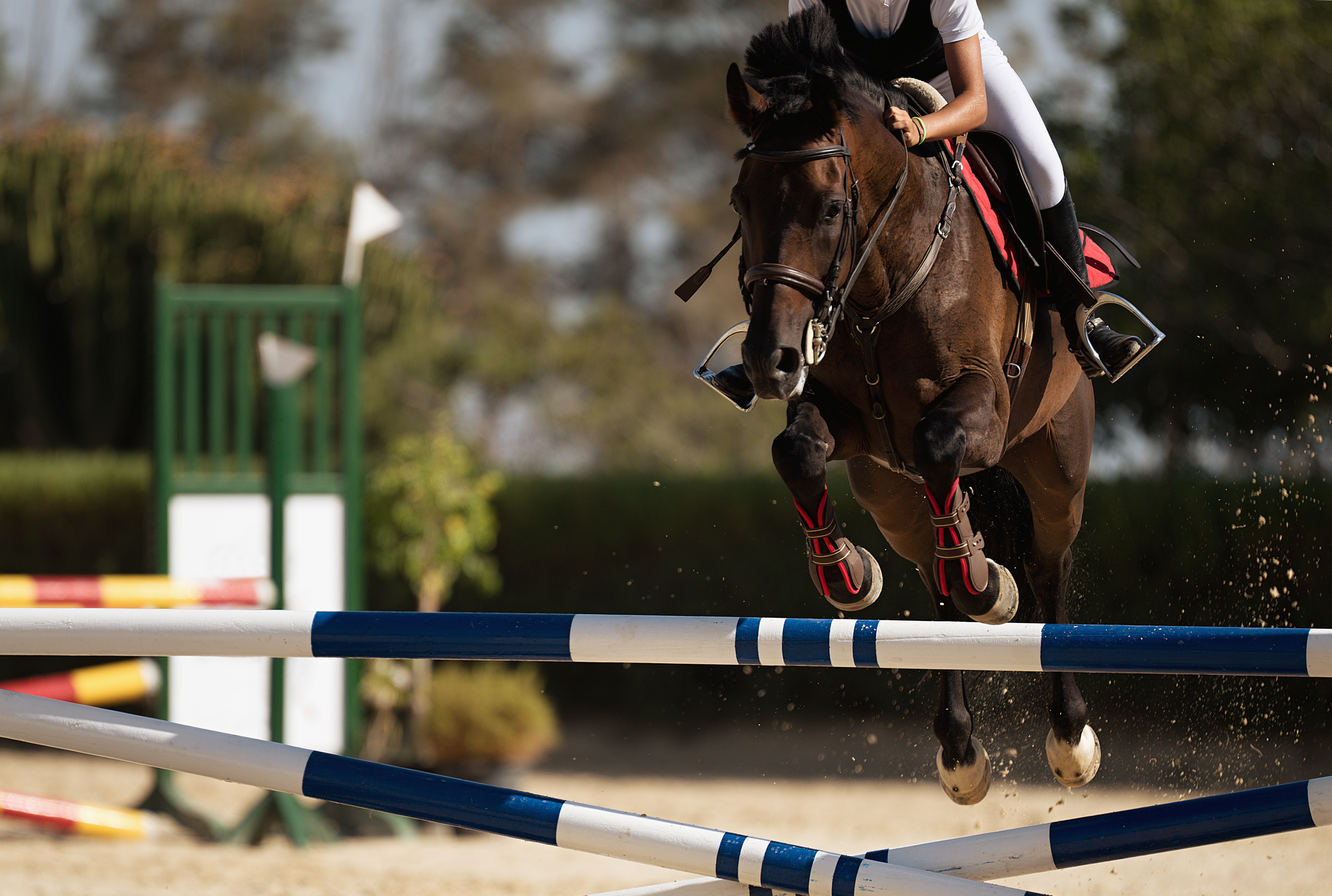The color of the rails on a jump can have an impact beyond aesthetics. A study from Belgium shows that horses are more likely to knock over rails of a certain hue.

Working at an independent company, the Catholic University of Leuven and Ghent University, researchers set out to determine whether color perception influences a horse’s jumping performance. “Horses have the ability to see colors as a red–green colorblind human does,” says Jan Spaas, PhD, DVM. “They see colors but have difficulties distinguishing them from other colors within a small spectrum range.”
The study was based on an indoor experiment (white ground surface), using 20 young show jumpers piloted by two riders with international competition experience, and on an outdoor experiment (green ground surface) using eight horses. Each horse was ridden six times over a course of six fences—three blue and three green in alternating succession. The researchers noted which jumps were touched by the horses and which had rails knocked down.
The study was designed to eliminate all influences other than the color of the fences. For instance, between each round the order of the colored jumps was changed to ensure that a particular jump’s position would not be a factor in performance. “The riders were from a very high professional level and [ground lines] were placed at a perfect distance from the fence,” says Spaas, “so there were no problems in positioning the horse correctly at the fence, regardless of the color.”
The data showed that blue rails jumped indoors were the most likely to be touched or knocked down by the horses. However, when the courses were jumped outdoors in a grass arena, the difference between the colors became insignificant, “because the blue were less hit and the green a little bit more than in the first experiment,” says Spaas.
These findings seemed surprising at first, says Spaas, but make sense from an evolutionary standpoint: “From a horse’s point of view, I expected more errors on green bars in both arenas and definitely on the green grass. However, it has been postulated that dichromatic vision [colorblindness] is superior to trichromatic vision [normal color vision] at detecting camouflage when there is a color match between the target and the background. So, through evolution, horses have been trained to see the same colored objects as the background. Just imagine what predators could do when horses wouldn’t notice them in a similar background or if they would harm themselves each time they would have to jump a nature-colored obstacle. I really believe it is an evolutionary feature.”
Spaas stresses that this study doesn’t mean horses can’t see blue, rather that they “just don’t jump it that well on a white surface. They will be able to distinguish a blue bucket from a yellow one, for example.” He adds that riders may want to train over blue-colored fences to have an advantage at competitions. “On the other hand, clever course designers could strategically use the color blue in order to have fewer clear rounds on white surfaces.”
Reference: “Correlation between dichromatic colour vision and jumping performance in horses,” The Veterinary Journal, August 2014
This article first appeared in EQUUS issue #446
Don’t miss out! With the free weekly EQUUS newsletter, you’ll get the latest horse health information delivered right to your in basket! If you’re not already receiving the EQUUS newsletter, click here to sign up. It’s *free*!








